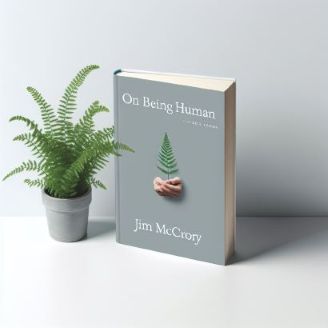
Image generated with the assistance of Microsoft Copilot
On Tenderness
It’s not a word we hear often these days—tender. It sounds almost old-fashioned, a term borrowed from lullabies and love letters, out of place in a world obsessed with strength, strategy, and self-promotion. Yet there’s a quiet defiance in tenderness—a moral courage that refuses to harden. In a world that teaches us to toughen up, tenderness dares to remain soft.
The etymology of tender offers insight into its soul. From the Latin tener—soft, delicate, young—it evokes the image of a sapling swaying in the wind, not despite its weakness but because of its flexibility. It is a word that breathes, not shouts
The philosopher Søren Kierkegaard once wrote, “Life can only be understood backwards; but it must be lived forwards.” Tenderness belongs to that forward-facing life. It requires us to be present in the moment, to respond not with rehearsed cynicism, but with a kind of openheartedness that makes us vulnerable to pain—but also to beauty.
Psychologically, we are wired to protect ourselves from hurt. The amygdala, our ancient threat-detection system, flares up at anything unfamiliar. Tenderness works against this grain. It invites the slower brain—the prefrontal cortex—to respond with empathy, with measured grace. As Brené Brown puts it, “Vulnerability is the birthplace of love, belonging, joy, courage, empathy, and creativity.” Tenderness is the handmaid of vulnerability.
To be tender is not to be fragile, but to possess an inner elasticity, a strength supples enough to bend but not break. Think of the willow tree, which outlasts the oak in storms because it yields. Or consider the Japanese concept of amae—a sweet, presupposed acceptance between loved ones. Tenderness, like amae, assumes you will not be rejected when you risk softness. It is a moral trust in the goodness of relationship.
In literature, tenderness often appears in the margins—in the worn hands of Kent in King Lear, or the silence between Elizabeth and her father in Marilynne Robinson’s Gilead. Simone Weil, the French writer, once said, “Attention is the rarest and purest form of generosity.” Tenderness pays attention. It notices the unnoticed: the trembling lip, the quiet withdrawal, the soul behind the stranger’s eyes.
When Jesus wept at Lazarus’ tomb, it was not just grief—it was divine tenderness. He could have spoken of resurrection first, but he chose to feel first. That order matters. There is a sacredness in lament, in acknowledging suffering before solving it. In that moment, he gave us a model of love that doesn’t leap to fix but lingers to feel.
I think of my own life, and moments when tenderness rewrote the script.
In a fractured world, the quality is resistance. It refuses to retaliate. It listens instead of lectures. It makes room. And perhaps that is its most Christlike quality: it does not occupy all the space. It steps aside. It lets the other in.
The writer John O’Donohue once observed, “Tenderness is the most fragile presence of the soul, and it is not a mood but a way of being.” We must protect it—especially as we age, as loss and disappointment threaten to calcify us. The temptation is to grow defensive. But the call of tenderness is to remain open. To remain human.
If faith is the substance of things hoped for, then perhaps tenderness is the texture of that faith made flesh. It cannot be manufactured. It is cultivated, often in silence, through sorrow, through the deliberate decision not to become bitter.
In a noisy, combative age, to be gentle is to live prophetically. To forgive when wronged. To stoop when others climb. To weep when others mock. This is not softness—it is the kingdom of God drawing near.
“Be kind and tender-hearted, forgiving one another, as God in Christ forgave you.”
Ephesians 4:32.